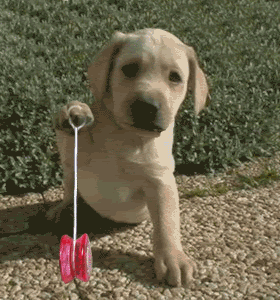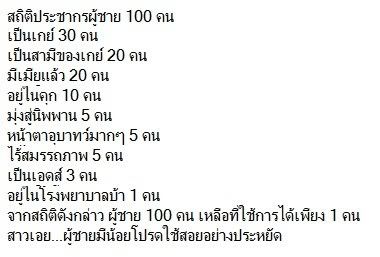Funny
Copy this code to your profile or website:
Copy this code to your profile or website:
Funny
Copy this code to your profile or website:
Copy this code to your profile or website:
Funny
Copy this code to your profile or website:
Copy this code to your profile or website:
2 Simple Tips For Getting Faster Digital Camera Performance
By Christine Peppler
A common complaint about a low to mid range digital camera is the speed at which it captures images. Such complaints are the result of lag time: both the delay between pressing the shutter button and getting a single picture and the time between capturing consecutive images.
Certainly buying a higher end digital camera can significantly reduce either of these two delay issues. Recent news reports even indicate that Casio is in the process of developing a digital camera that will be capable of photographing 300 frames per second but that is obviously in the future at this point and may be out of the desired price range for many buyers. For the near term, and for the buyer on a budget, there are a couple of tips to help deal with a sluggish digital camera.
Reducing Lag
The lag time that occurs between pressing the shutter button and taking the picture is due in large part to the focusing functions that are being performed by the camera during this time.
Many digital camera owners have learned to work around this lag time. By simply pressing the button halfway down and holding it prior to taking the picture, the camera is able to complete much of the focusing prior to asking the camera to actual capture an image. Once the user is ready to take the shot, the button is depressed completely and, viola, the camera responds with almost no delay. This technique obviously works only when the person taking photographs plans ahead and is prepared to take a shot prior to the proper moment.
Reducing Delay Between Shots
Unfortunately, users may still have to deal with the delay between taking one photo and the next which can result in missing many great shots. This delay is due to the fact that a digital camera requires time to write the image to memory and not all cameras and memory cards are as fast at writing as others.
Setting resolution lower can help to speed up a digital camera as there is less information to record. However, the drawback is clearly a loss in the quality of the image captured. However, there is another way of reducing the time between pictures without compromising the quality of the resulting photograph. Use of a memory card that has a faster write time can result in a significant decrease in the delay. This can become particularly important with a camera that has 5, 6, 8 or more pixels. Because of the increased amount of information to be recorded, a 2x or 4x memory card will not allow such a digital camera to operate very quickly.
For this technique to be effective in speeding up the performance of a digital camera however, it is also important to remember that the camera being used must support the faster read/write times offered by the memory card. Thus, knowing what the camera can accommodate will allow the user to determine if an 8x or 16x memory card would be the better choice.
A digital camera offers many benefits to users such as the ability to view shots immediately, edit shots for better quality photos, and to print photographs at home. The drawback of some digital cameras continues to be a more sluggish performance but there are certainly a few steps that users can take to alleviate any problems this may create.
The author, Christine Peppler invites readers to discover more information about using or choosing a digital camera through information available at her home electronics store, homemedias.info.
Article Source: http://EzineArticles.com/?expert=Christine_Peppler
Photography - Shooting Autumn Leaves
Leaves are a very popular subject when it comes to autumnal photography due to their great variation in colour at this time of year. If you are creative these subjects can offer great photographic potential. Here are 5 quick tips to make sure you make the most of the autumn weather
1. Ice – As the temperature drops outside leaves invariably become frozen in puddles, these can produce great photos. You can always pour cold water on the ice to remove the crystals and give it a really clear look, conversely you can scratch the surface to add some interest. If you can’t wait for the temperature to drop you can always stick some leaves in a water filled plastic container and freeze it overnight, just remember to fill your frame when you take the shot.
2. Falling leaves – As the leaves start to fall a rich carpet of yellows and reds starts to form. To get a sense of leaves falling without having to wait for a strong gust just ask an assistant to drop some whilst you snap away. Aim for a wide aperture to blur the background and go for shutter speeds of between ½ sec and 1/30 to get a sense of motion, you may need an overcast day or a neutral density filter as with the aperture wide open at this speed you may over expose during the day.
3. Soft focus – A quick, cheap way of adding a soft focus filter to your lens is adding a clear piece of plastic to the front of the lens (Cling film) and breathing on it, or on your UV filter if you have one. This will add a soft ethereal feel to your shots, just remember if you are breathing on your filters to give them a good clean after.
4. Back lighting – A great way to capture the vivid autumn colours is use the sun to back light them. This works great if you can shoot with a dark, shaded background. Remember if the back ground is dark the leaves may over expose so dial in a -1 stop to compensate and keep the darks dark and correctly expose the leaves. If the background is very bright you’ll have to add +1 stop to stop the leaves under exposing.
5. Get low, go wide – To really emphasise the coloured carpets so abundant in Autumn, fit a wide angle lens and get low down, focusing on a close leaf and fill the frame with the leaves going away into the distance, open spaces such as parks are great for this.
I am a photographer based in the north of England, Check out my website at www.petebarnesphotography.co.uk or my blog at www.petebarnesphotography.co.uk/blog.html
Article Source: http://EzineArticles.com/?expert=Pete_Barnes
Funny
Copy this code to your profile or website:
Copy this code to your profile or website:
Funny
Copy this code to your profile or website:
Copy this code to your profile or website:
Funny
Copy this code to your profile or website:
Copy this code to your profile or website:
Funny
Copy this code to your profile or website:
Copy this code to your profile or website:
Funny
Copy this code to your profile or website:
Copy this code to your profile or website:
FUNNY
Copy this code to your profile or website:
Copy this code to your profile or website:
FUNNY
Copy this code to your profile or website:
Copy this code to your profile or website:

ไม่มีความคิดเห็น:
แสดงความคิดเห็น